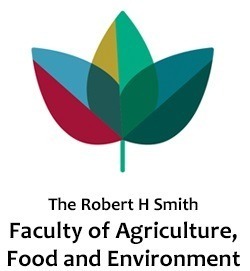Munitz, S. ; Schwartz, A. ; Netzer, Y. .
Evaluation Of Seasonal Water Use And Crop Coefficients For 'Cabernet Sauvignon' Grapevines As The Base For Skilled Regulated Deficit Irrigation.
Acta Horticulturae 2016,
1115, 33-39.
Publisher's VersionAbstractWater consumption of wine grapevines (Vitis vinifera 'Cabernet Sauvignon') was measured during three consecutive growing seasons (2012-2014) using 6 drainage lysimeters. The lysimeters (1.5 m3 each) were installed within a two-hectare commercial vineyard in a Mediterranean region in the central mountain region of Israel. Water consumption of the lysimeter-grown vines (ETc) was measured daily and reference evapotranspiration (ETo) was calculated from regional meteorological data according to the Penman Monteith equation. Seasonal curves of crop coefficient (Kc) were calculated as Kc = ETc/ETo. Maximum ETc values (weekly average) in different seasons ranged from 7.5 to 6.64 mm day-1 and seasonal ETc (from DOY 99 through DOY 288) ranged from 746 to 780 mm over the growing seasons. Leaf area index (LAI) was measured weekly using the SunScan Canopy Analysis System. Maximum LAI ranged from 1.36 to 1.16 m2 m-2 for the 2012-2013 seasons, the seasonal LAI pattern was quite similar to control vines grown in the surrounding vineyard. A linear curve relating Kc to LAI (R2 values ranged from 0.76 to 0.85) is proposed as the basis for efficient irrigation management. Some of the differences in ETc and Kc values that were observed are different from those obtained in table grapes (Williams et al., 2003; Netzer et al., 2009) and wine grapes (Picón-Toro et al., 2012) is explained by the different canopy size and architecture.
Erel, R. ; Yermiyahu, U. ; Yasuor, H. ; Chamus, D. C. ; Schwartz, A. ; Ben-Gal, A. ; Dag, A. .
Phosphorous Nutritional Level, Carbohydrate Reserves And Flower Quality In Olives.
PLoS ONE 2016,
11.
Publisher's VersionAbstractThe olive tree is generally characterized by relatively low final fruit set consequential to a significant rate of undeveloped pistils, pistil abortion, and flower and fruitlet abscission. These processes are acknowledged to be governed by competition for resources between the developing vegetative and reproductive organs. To study the role of phosphorus (P) nutritional level on reproductive development, trees were grown under four levels of P for three years in large containers. Phosphorus nutritional level was positively related to rate of reproductive bud break, inflorescence weight, rate of hermaphrodite flowers, pistil weight, fruitlet persistence, fruit set and the consequential total number of fruits. The positive impact of P nutrition on the productivity parameters was not related to carbohydrate reserves or to carbohydrate transport to the developing inflorescence. Phosphorous deficient trees showed significant impairment of assimilation rate, and yet, carbohydrates were accumulated in inflorescences at levels comparable to or higher than trees receiving high P. In contrast to female reproductive organs, pollen viability was consistently higher in P deficient trees, possibly due to the enhanced carbohydrate availability. Overall, the positive effect of P on female reproductive development was found to be independent of the total carbohydrate availability. Hence, P is speculated to have a direct influence on reproductive processes. © 2016 Erel et al. This is an open access article distributed under the terms of the Creative Commons Attribution License, which permits unrestricted use, distribution, and reproduction in any medium, provided the original author and source are credited.

